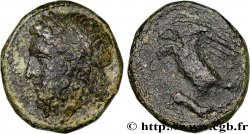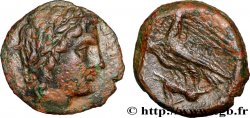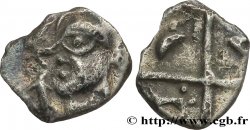v59_0202 - SICILY - AKRAGAS Shekel
MONNAIES 59 (2013)
Starting price : 2 200.00 €
Estimate : 3 500.00 €
Realised price : 2 507.00 €
Number of bids : 2
Maximum bid : 3 651.00 €
Starting price : 2 200.00 €
Estimate : 3 500.00 €
Realised price : 2 507.00 €
Number of bids : 2
Maximum bid : 3 651.00 €
Type : Shekel
Date: c. 213-210 AC.
Mint name / Town : Agrigente, Sicile
Metal : silver
Diameter : 21 mm
Orientation dies : 12 h.
Weight : 6,43 g.
Rarity : R3
Coments on the condition:
Exemplaire sur un flan large et ovale, légèrement décentré des deux côtés avec les grènetis visibles. Portrait de Melqart magnifique. Revers fantastique. Magnifique patine de collection ancienne avec des reflets mordorés et bleutés acier. Conserve une partie de son brillant de frappe et de son coupant d’origine
Catalogue references :
Predigree :
Cet exemplaire provient de la vente Gorny 55, n° 76 en 1991 et de la collection du docteur Thierry de Craeker
Obverse
Obverse legend : ANÉPIGRAPHE.
Obverse description : Tête laurée de Melqart imberbe à gauche ; grènetis perlé.
Reverse
Reverse legend : LETTRE PUNIQUE À L’EXERGUE (ALEPH).
Reverse description : Éléphant africain passant à droite ; grènetis linéaire.
Commentary
Ce type est de la plus grande rareté. Il a été attribué aussi bien à l’Espagne pour l’atelier de Gadès qu’à Jugurtha. Il faut bien rendre ce type à Agrigente, frappé pendant l’occupation carthaginoise de la cité entre 213 et 210 avant J.-C. Notre exemplaire est légèrement décentré sur la trompe de l’animal. C’est la première fois que nous proposons un exemplaire à la vente. De la plus grande rareté.
This type is extremely rare. It has been attributed both to Spain for the Gades mint and to Jugurtha. This type must be attributed to Agrigento, struck during the Carthaginian occupation of the city between 213 and 210 BC. Our example is slightly off-center on the animal's trunk. This is the first time we have offered a example for sale. Extremely rare
This type is extremely rare. It has been attributed both to Spain for the Gades mint and to Jugurtha. This type must be attributed to Agrigento, struck during the Carthaginian occupation of the city between 213 and 210 BC. Our example is slightly off-center on the animal's trunk. This is the first time we have offered a example for sale. Extremely rare







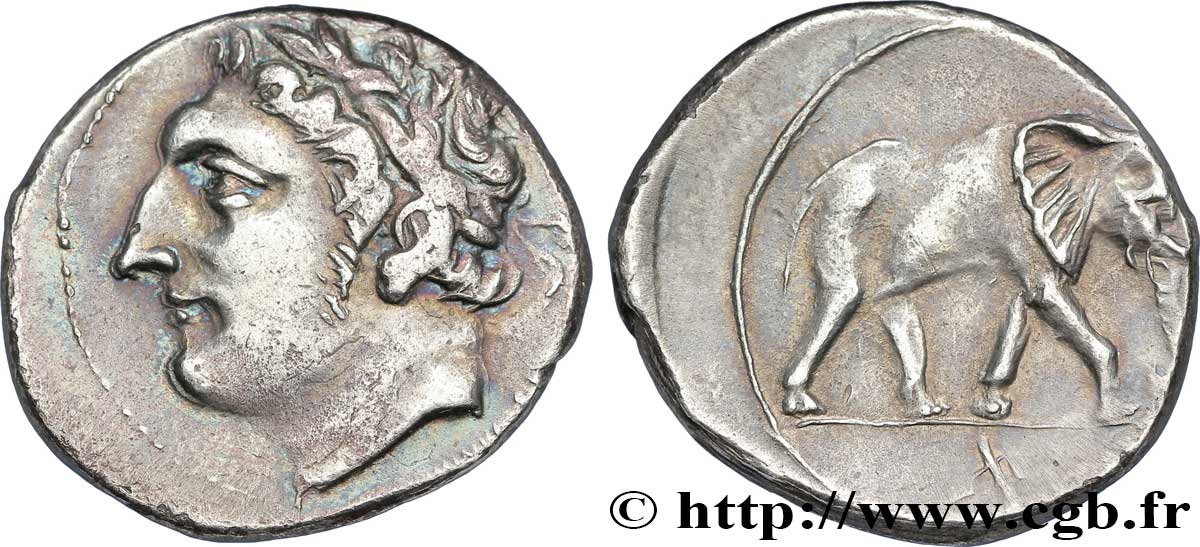
 Report a mistake
Report a mistake Print the page
Print the page Share my selection
Share my selection Ask a question
Ask a question Consign / sell
Consign / sell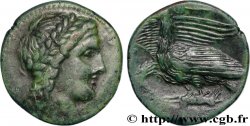
 Full data
Full data
